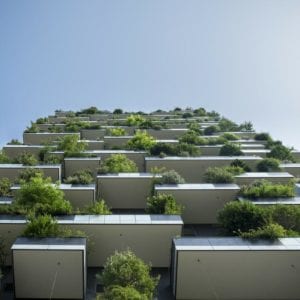Considering a career as a green architect is an exciting prospect for many reasons – first and foremost, you will have the ability to make an impact on the future of the environment we live in. You’ll be working within an elite segment of the architectural industry, green architecture. Furthermore, you’ll be part of a creative force that allows you to integrate your expertise, combining your design abilities with your knowledge of best practices in sustainability. Finally, you will most likely find career stability, as this specialized sector continues to grow in demand across the globe. In this article, we’ll explore the educational requirements needed to pursue a sustainable architecture degree, leading to this sought-after career opportunity, including the type of skills you’ll need to succeed.
Why A Career In Green Architecture May Be Right For You
If you’re thinking about becoming a green architect, there are certain things you should take into consideration and decide if this career is a good fit for you. Although there are many duties similar to those found in a traditional architecture role, a position as a green (or ‘sustainable’) architect requires a very specialized set of knowledge, with a heavy emphasis on protecting the ecosystem. This niche-market profession is an amalgam of knowledge: blending design elements and architectural theory with sustainable building practices, the ultimate goal of a successful green architect is to create a structure that has a minimal impact on the environment.
What is Green Architecture?
When considering a career as a green architect, it is important to understand what green architecture is. Green architecture is a building that helps reduce the negative and harmful effects on our climate and natural environment all through its design strategy, construction process, and operation. The designer’s job is to ensure safeguard air, water, and earth by choosing eco-friendly/sustainable materials and protecting the biodiversity of the area during construction practices. The green building design may include solar panels, commercial toilet composting, or rainwater harvesting. Not all green buildings are the same nor do they need to be the same. Factors like country, region, climate conditions, cultural traditions, or regulations will influence the sustainable design. Overall, these infrastructures help reduce their environmental footprint and are more environmentally friendly.
Identifying the Characteristics of Green Architecture
In order to attain this lofty objective, a green architect must have an in-depth understanding of sustainable building materials and green construction methodologies. This may entail a host of unique approaches, such as;
- Utilizing non-toxic and biodegradable resources
- Ecologically-savvy plumbing fixtures and rainwater methods for water conservation
- Efficient heating and cooling using natural ventilation systems
- Designs for energy efficiency, such as lighting, appliances, solar panels, or wind power
- Green waste management using salvaged and recycled materials
- Native vegetation for landscaping with minimal environmental impact to natural surroundings
- Other forms of self-sustainable engineering
Keeping these factors in mind, individuals with a penchant for the creative arts, excellent analytical skills, and a passion for protecting the environment may find this a challenging and rewarding occupation worth pursuing.
Knowing What is LEED
LEED is an important acronym to familiarize yourself with. It stands for “Leadership in Energy and Environmental Design.” It is a third-party green building program and is the most widely used green building rating system in the world. Obtaining this certification signifies that a green design is helping promote environmental performance from reducing carbon footprint to improving indoor air quality. LEED certification is used for all types of building from commercial to residential and with all project types from new construction to interior fit-outs.
Sustainable Architecture Job Requirements: An Overview
As discussed, there are a number of responsibilities entailed in the role of a green architect that mirror those found in a traditional architect position. In addition to working long hours when faced with impending deadlines, you’ll also be required to work well with clients and collaborate with a wide range of industry professionals. Although many green architects work for professional firms, you may also choose to become self-employed. According to the U.S. Bureau of Labor Statistics (BLS), the demand for sustainable architecture continues to grow, with no signs of decline in the industry over the next decade.
Career Requirements for Green Architecture
- Degree Field: Architecture
- Degree Level: This career requires a professional degree, typically a Bachelor of Architecture (B.Arch.) or Architecture Master’s (M.Arch.)
- Experience & Licensure: Architects must be licensed in all states. In order to obtain voluntary certification, you must go through the National Council of Architecture Registration Boards (NCARB).
- Requisite Skills: Primary skills include excellent communication, analytical, visualization, organizational and creative abilities. Intermediate/advanced competence with computer-aided design and drafting (CADD) programs is also required.
- Salary (2014): According to the BLS, the median salary for architects in 2014 was $74,520.
Step 1: What Sustainable Architecture Degree Options Should I Consider?
If you’re planning a career in green architecture, you will first need to earn a professional degree in architecture, either at the bachelor’s or master’s degree level. Throughout most of the U.S., these professional degree programs must be accredited by the National Architectural Accrediting Board (NAAB). The majority of students who choose this career path enroll in the 5-year professional Bachelor of Architecture (B.Arch.) degree program, starting with courses such as CADD and structural systems. You can also expect architectural history, basic design studio and materials & building construction among your introductory courses. As you advance in your major, you can expect more complex topics and subject matter, such as environmental applications and integrated building systems. For students who hold a bachelor’s degree in a field other than architecture, you may wish to consider earning a Master of Architecture (M.Arch.) professional degree.
Did You Know…
In order to receive your license as a professional architect, every state in the U.S. requires aspiring architects to work under the supervision of a registered architect. Completing an internship under the tutelage of The American Institute of Architects (AIA) and the NCARB will satisfy this requirement. These programs typically take up to three years to complete, with training that incorporates elements of construction and design.
Step 2: Becoming a Licensed Architect
If an architect is providing services to the public, it is mandatory and crucial they are licensed by local jurisdictions. To become a licensed architect, you must:
- Complete approved and valid internship program
- Pass the Architect Registration Examination (ARE)
Architects should also consider becoming certified by the National Council of Architecture Registration Boards (NCARB). This certification will allow people with architecture degrees to easily earn their license in other states.
Step 3: Earning Green Certification & What to Expect
Once you’ve received your licensure, aspiring sustainable architects will need to earn their green certification in order to be qualified in this highly-specialized field. The U.S. Green Building Council (USBGC) created the Leadership in Energy and Environmental Design (LEED) to certify qualified individuals as LEED Green Associates. You can meet your requirements in the following ways:
- Involvement in LEED-registered projects
- Employment within the green building industry
- Completing LEED-approved courses related to sustainable building
Step 4: Continuing Green Architect Education
In order to maintain your licensure and LEED certification as a green architect, you must participate in continuing education coursework. Although requirements may vary from state to state, they typically include workshop participation, college-level courses, and attending conferences. You will be obligated to complete 15 continuing-education courses biennially in order to maintain your LEED Green Associate credentials.
Checkout how NewSchool is reducing their carbon footprint here.









 619-684-8800
619-684-8800

